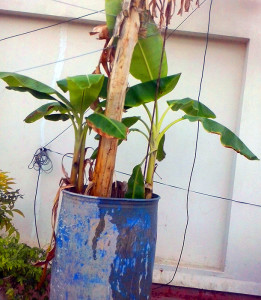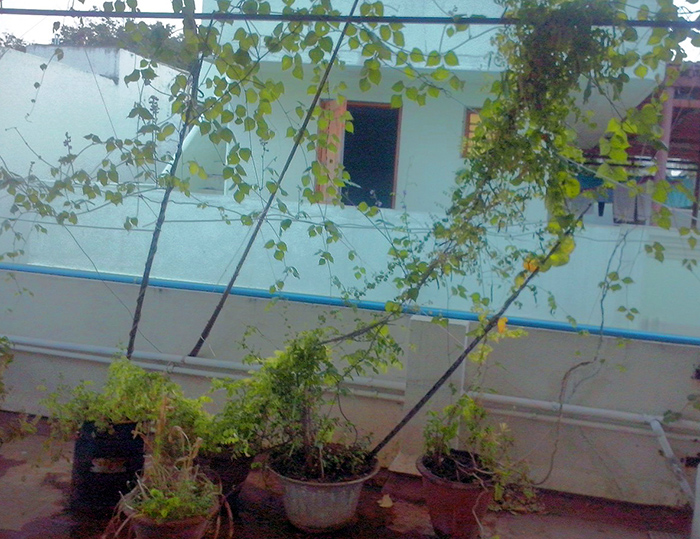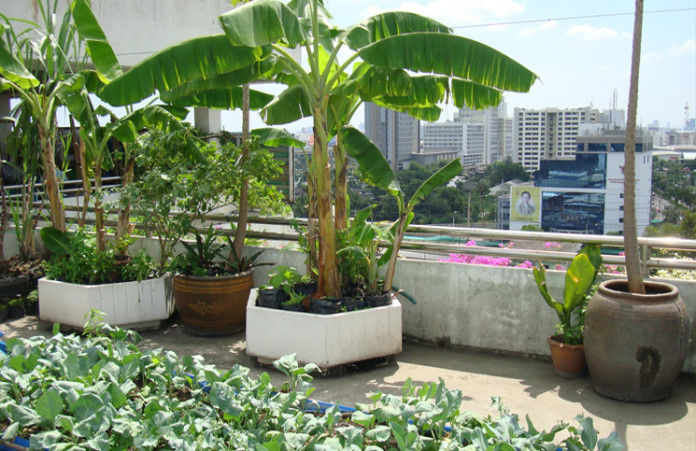Author – Neeraja Sundar

It would be an understatement if we say the state of the environment we live is appalling! With an increasing number of energy inefficient buildings, polluting industries and mountains of garbage, every day we are finding new ways to ruin our surroundings. We have wiped out the trees; we have successfully damaged the ozone layer and we have embarked on a mission to melt the ice caps and create global warming. I am quite confident in our abilities to succeed!
With destruction happening on a massive level on every front, the least we can do is exercise some damage control on a micro level. We can take care of a few plants in our houses and nurture trees around our neighborhood. In addition to playing a small role in caring for the environment, these kitchen gardens are aesthetically pleasing as well. Planting tomato companion plants not only enhances the visual appeal but also contributes to the overall health of your garden by providing natural support and protection against pests for the tomatoes.
 Gardening, however, is not an easy job. We need to put in time, money and effort, but the results would be wonderful. Besides this is our atonement for the atrocities we have committed. In a lazy world powered by technology, these little bouts of physical labor is invigorating!
Gardening, however, is not an easy job. We need to put in time, money and effort, but the results would be wonderful. Besides this is our atonement for the atrocities we have committed. In a lazy world powered by technology, these little bouts of physical labor is invigorating!
A few years ago, inspired by a television show, my father planned to set up a rooftop garden. Today, we have pots of all sizes, colors, textures and materials. My father is now an avid gardener. He thinks of the plants as his children. And naturally, I spend some quality time with my siblings! Right from changing the top soil, to sprinkling fertilizers to watering them, I have done it all as if one would care for a baby. We have two gardens – one surrounding the building at the floor level and another is at the terrace of our house. Right from flowering plants to climbers to plantain trees, we have it all on our roof.
The key elements of a rooftop kitchen garden are:
- Selection of suitable plants – The plant should be suitable for the soil you get in your area, the climatic conditions of your city, the season and what would be beneficial for your home. Among vegetables, tomato and chili are the easiest to grow, while Spider Plant, Anthurium, Syngonium, Caladium are ideal ornamental plants that act like indoor air purifiers as well.
- Ideal containers for plants – There are cement pots, clay pots, metal paint containers, huge drums and even large jute or plastic sacks. Shallow cement pots are ideal for herbs like coriander, mint, etc., while clay pots are useful for rapidly draining excess water. Plastic grow bags are becoming popular and they are eco-friendly, since we continue to use them for a long duration.
- Location for kitchen garden – The place could be a corridor, backyard, balcony, fire escape way, windows, or along the walls. The primary deciding factor is sunlight. We need to select the location based on the amount of sunlight you get in there for the growth of the plant.
- Additional input for growth – We need to regularly provide organic fertilizers and other nutrients to ensure growth. Sometimes we have to use chemical pesticides to ward off large number of pests, but mostly we go for the natural ones. Ground paste of chilies and garlic are an effective bio-pesticide. It is equally important to maintain a neat garden. Cool soil invites the ant family to settle indefinitely.
 Regularly, I make monthly trips to the Agri Horticultural Society Gardens here in Chennai to purchase fertilizers and pesticides. Every Sunday, the whole family spends the morning de-weeding the garden and cleaning the terrace. We use Bhoo Thai, which is an odorless quality compost made of natural compostable material and microorganisms. It enriches the soil and helps the plants remain healthy.
Regularly, I make monthly trips to the Agri Horticultural Society Gardens here in Chennai to purchase fertilizers and pesticides. Every Sunday, the whole family spends the morning de-weeding the garden and cleaning the terrace. We use Bhoo Thai, which is an odorless quality compost made of natural compostable material and microorganisms. It enriches the soil and helps the plants remain healthy.
For creepers and climbers, we have raised supports in the form of iron rods as well as the huge dried stems of the coconut trees. Metallic ropes crisscross the supports. Often the strong-willed tendrils refuse to conform to our ways and clutch other plants and grow in their own fashion.
According to the Hindu tradition, a Tulsi or basil plant adorns every house. Apart from its use for divine purposes, the Tulsi plant wards off mosquitoes and pests and its leaves can cure snake bites, fevers and colds. Tulsi purifies the air as well. We have two varieties: Sri Tulasi has light green leaves, while Krishna Tulasi has dark green leaves. We also have thyme; another remedy for cold.
 We recently harvested two huge ash gourds weighing five and seven kilos respectively. Our garden provides us a variety of organic food ingredients such as drumsticks, beans, snake gourds, bitter gourds, ridge gourds, pumpkins, spinach, guavas, pomegranates, hibiscus, jasmine, roses and many more. Within two years, we hope to pluck delicious organic ripe mangoes as well!
We recently harvested two huge ash gourds weighing five and seven kilos respectively. Our garden provides us a variety of organic food ingredients such as drumsticks, beans, snake gourds, bitter gourds, ridge gourds, pumpkins, spinach, guavas, pomegranates, hibiscus, jasmine, roses and many more. Within two years, we hope to pluck delicious organic ripe mangoes as well!
The added benefit of a rooftop kitchen garden is that it cools the house considerably. During the scorching Indian summer, our plants on the roof bring down the temperature a notch. The breezy evenings will be enjoyed in the company of the freshly watered plants and the aroma of damp soil. So, start a rooftop garden today and get reacquainted with nature and fresh air.


